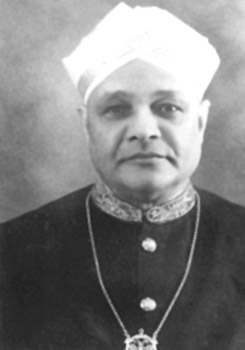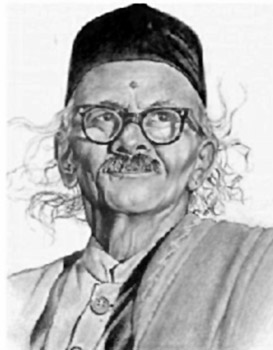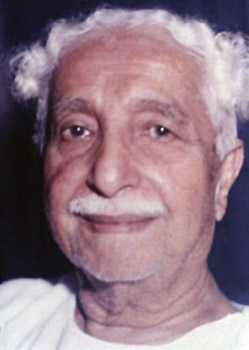 Poetry in Kannada literature can be best understood by taking a look at the works of the three most renowned poets of the time. These are B. M. Srikantia, Bendre and Kuvempu.
Poetry in Kannada literature can be best understood by taking a look at the works of the three most renowned poets of the time. These are B. M. Srikantia, Bendre and Kuvempu.
B. M. Srikantia
B. M. Srikantia published his new poems during 1919-24 in various magazines and brought them out in book form under the title English Gitegalu (English Songs) in 1926. This was a collection of 62 poems. Except for three original ones, they are Kannada renderings of poems from Palgrave`s Golden Treasury. Some of these are by Wordsworth ("Written in March," "Rainbow," "The Pet Lamb"), P. B. Shelley ("To a Skylark"), Sir Walter Scott ("Gathering Song"), Tennyson ("Charge of the Light Brigade"), Cowper ("Loss of the Royal George"), Campbell ("Ye Mariners of England"), Byron ("Could Love for Ever"), Robert Burns, Thomas Hood, Charles Lamb, Lady Nairne, Christina Rosetti, Clough, and Sir Henry Wotton. Srikantia`s choice of poems reflects the taste of the English teachers in India and in England at that time. It is interesting that his book does not include any poem by John Keats. Wordsworth and Coleridge are not represented by poems that make greater creative use of the English language. All the poems he chose are simple in structure and theme.
Srikantia was remarkably successful in making use of these poems to write a new kind of poetry. Quite a number of new stanzaic patterns, modeled on English stanziac patterns, were introduced into Kannada literature. He also used modern Kannada idioms and the language of the ordinary people. Poets like S. G. Narasimhachar and Hattiyangadi Narayana Rao had earlier failed to write new poetry because they used old stanzaic forms and archaic language.
 The subject matter also changed. Kings and gods gave place to birds, rainbows, riversides, and ordinary soldiers. "Mada Madi," an adaptation of Robert Burns`s "Duncan Gray," depicts Mada and Madi in their hunting spree. The names Mada and Madi suggest that they are man and woman of lower caste. Earlier in Kannada poetry, the pleasures of hunting were limited to the royal couple. For the first time, a poet was giving expression to the pleasures of untouchables. The shift was obvious, and the consequences were far-reaching.
The subject matter also changed. Kings and gods gave place to birds, rainbows, riversides, and ordinary soldiers. "Mada Madi," an adaptation of Robert Burns`s "Duncan Gray," depicts Mada and Madi in their hunting spree. The names Mada and Madi suggest that they are man and woman of lower caste. Earlier in Kannada poetry, the pleasures of hunting were limited to the royal couple. For the first time, a poet was giving expression to the pleasures of untouchables. The shift was obvious, and the consequences were far-reaching.
Srikantia translated Aeschylus` Persae and adapted Sophocles` Ajax and Ranna`s Sahasabhimavijayam, a tenth-century Kannada poem. His intention was to introduce the concept of hubris and hamartia. These were the beginnings of poetic drama in Kannada, which was later developed by Kuvempu, Narasimhachar and Ramachandra Sharma. Kuvempu wrote poetic drama by making use of myths from the Ramayana and the Mahabharata. Narasimhachar created a new opera by making use of Carnatic music. Ramachandra Sharma used free verse for poetic drama.
As a poet, Srikantia`s was a liberating influence. Many poets now had a new way of expressing themselves. Among them, Da.Ra.Bendre, Kuvempu, Narasimhachar, V. K. Gokak, and Kadengodlu Shankara Bhatta (1904-68) are important.
Da.Ra.Bendre
 Da.Ra.Bendre was considered one of the greatest poets of the new liberated way in which the poets of modern Kannada literature were expressing themselves. He was exposed to the latest developments in Marathi poetry also Kannada folk songs, one of his dominant interests, also helped him find new idioms. This gave racy vigor to his poetry. But in his major poems, he uses folk idioms and rituals to suggest the difference between folk and urban cultures. For example, in a poem titled "Hubballiyamva," Bendre captures the longings of a village girl for a man from Hubli, a city. Another poem, "Sanna Soma-vara," depicts the days of childhood when a folk festival relating to spring was celebrated. Now, both the childhood and the days of folk festival are gone. The only thing that remains is memory and the longing.
Da.Ra.Bendre was considered one of the greatest poets of the new liberated way in which the poets of modern Kannada literature were expressing themselves. He was exposed to the latest developments in Marathi poetry also Kannada folk songs, one of his dominant interests, also helped him find new idioms. This gave racy vigor to his poetry. But in his major poems, he uses folk idioms and rituals to suggest the difference between folk and urban cultures. For example, in a poem titled "Hubballiyamva," Bendre captures the longings of a village girl for a man from Hubli, a city. Another poem, "Sanna Soma-vara," depicts the days of childhood when a folk festival relating to spring was celebrated. Now, both the childhood and the days of folk festival are gone. The only thing that remains is memory and the longing.
Bendre believed that life is a source of joy. In "Belagu," he celebrates morning as the time of peace and joy. It is the beginning not of daily routine, but of happiness. Another poem, "Kuniyonu Bara," suggests that the cosmos is in a state of dance, and the protagonist invites his mate to dance to the rhythm of day and night and to celebrate life.
This has led many critics to remark that evil was alien to Bendre`s sensibility. It would be proper to say that Bendre was aware of evil in life but gave it a secondary place in the all-pervading joy of creation. In this respect, his "Jogi" is a representative poem. The poem creates an atmosphere of darkness and terror. A bird, sitting on the branch of a tree surrounded by snakes, lures the protagonist. Its call is so fascinating and enchanting that it compels the protagonist to ignore the terror created by the atmosphere. He is unable to understand the meaning and the consequences of this call. Probably, it is a metaphysical call, or it is a call of the joys of life hidden behind terror and darkness. But the call is continuous, haunting, and one cannot help responding to it.
Bendre`s other writings include plays, literary criticism, and essays. His plays are tragicomedies about the absurd behavior of people in power.
Kuvempu
Another influential poet of this period is Kuvempu. His lyrics sing the glory of Karnataka, its culture, and civilization. These are simplistic in structure and theme, very popular, and sung in almost every public function. They also help Kannadigas to feel proud of their past during the freedom struggle. His plays include adaptations of The Tempest and Hamlet. Both are simplistic versions of Shakespeare`s plays. Kuvempu`s literary criticism explains Kannada works by using Sanskrit poetics. But his criticism is generally descriptive in nature. His Sri Ramayana Darsanam, retelling the story of the Ramayana in verse, is considered the mark of genius by his disciples and an exercise in pomposity by a few critics. His "Nirarikusamatigalagi" (Be Free in Thought), a lecture, taught the importance of freedom from superstition to a whole generation of Kannadigas.
Thus discussed above is poetry in Modern Kannada literature as seen through the most well-known poets of the time.



















